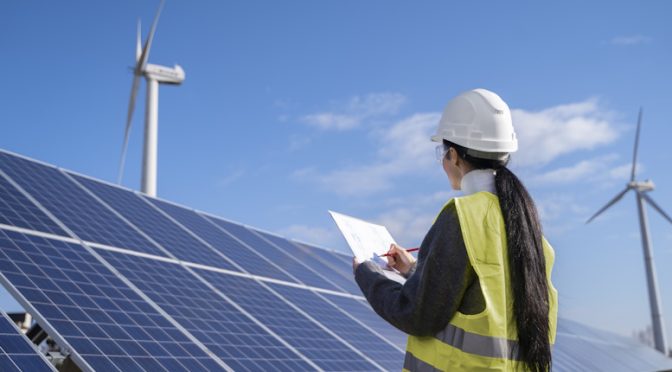Despite the figures, China is still geopolitically dependent for wind power and photovoltaic energy.
Last year, China accounted for 80% of global investment in the manufacturing of photovoltaic solar energy modules and this situation of dominance does not seem to be changing at least between now and the beginning of the next decade, taking into account production prices. unbeatable that your industry offers.
In a report on clean energy production capacities published this Monday, the International Energy Agency (IEA) outlines an encouraging picture of the availability of factories to manufacture the solar installations around the world needed in 2030 to meet climate goals.
Photovoltaic solar energy is the clean technology in which the geographical concentration of production is most pronounced, since more than 80% of total global capacity in 2023 was made in China.
And although the IEA believes that the United States and India will slightly increase their quota between now and 2030, that will hardly change the relative weight of China, which will continue to account for just under 80% by then.
In battery manufacturing, the current situation has many similarities, since China accounts for more than 80%, while the United States and the European Union each have 5%.
The authors of the study estimate that both the EU and the US could triple their relative weight in battery production capacities by the beginning of the next decade thanks to their respective public incentives for the sector, so that China’s would drop to 60%.
The imbalances are somewhat less pronounced in investments in electrolyzer plants, the necessary instrument to obtain green hydrogen from renewable electricity. But even so, China represents close to 60% and the forecast is that this percentage will decrease to 40% by 2030, while that of the United States will rise to 20% and that of the EU will practically remain stable at 15%.
In wind turbines, the concentration of capacity in China risks getting even worse, with a share that now exceeds 60% and will approach 70% at the beginning of the next decade, to the detriment above all of the EU, which will represent only 15%.
China appears as the cheapest production country for all the clean technologies contemplated in this report, in which an evaluation is made based on data from more than 750 factories around the world.
There are other lessons, such as that the cost to build photovoltaic module, battery and wind turbine factories in the EU and the United States is between 70% and 130% higher per unit of production than in China, and that before having take into account capital costs, which are also lower in China.
However, the IEA emphasizes that this initial investment in production facilities represents only between 15% and 25% of the final production costs of photovoltaic modules, and the proportions are similar for batteries (10-20 %).
That is, operating costs (including energy, materials, components or labor) play a much larger part and reducing some of these factors offers scope to reduce cost differentials with China.
However, the scenario it draws is more worrying from a geopolitical point of view due to the enormous dependence on China, which in 2023 represented three clean technologies (photovoltaic, wind, green hydrogen, heat pumps, etc.) quarters of the investment in production.
It is true that this means less than the 85% that had been concentrated in 2022, which is explained because in the 70% increase that occurred globally last year, up to 200,000 million dollars, the progression in the United States and the European Union (EU) was significant, especially in batteries, where these two regions tripled their 2022 figures.
Worldwide, 110 billion dollars were dedicated to the production of batteries, with an annual increase of 60%, while 80 billion dollars were dedicated to photovoltaic modules, more than double that of 2022.


